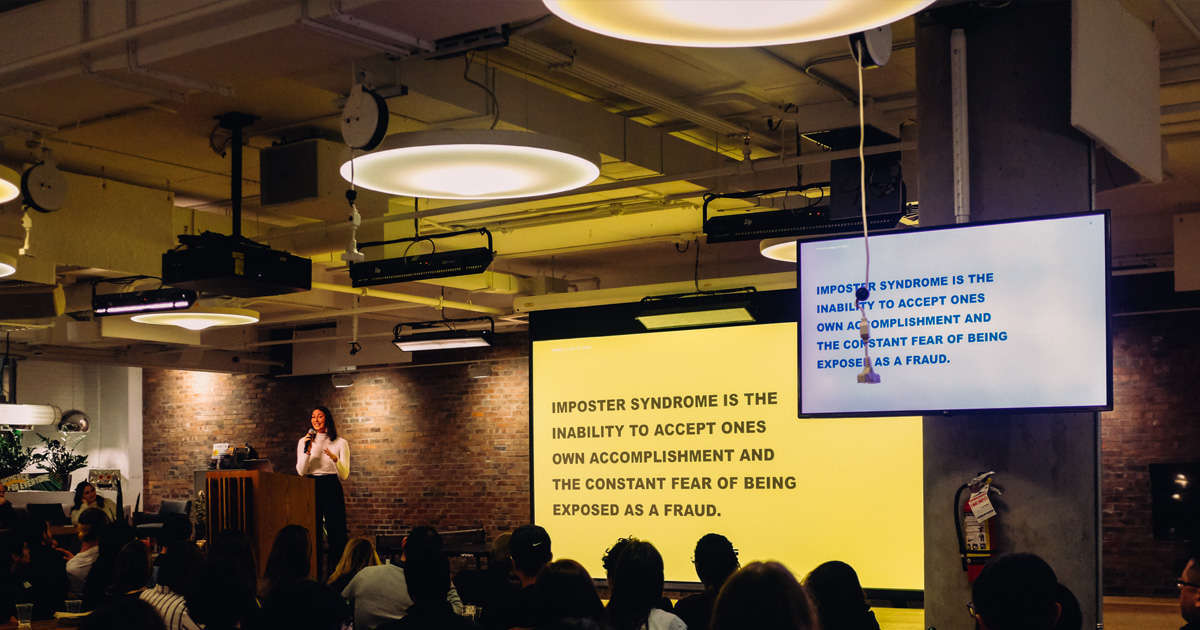Unlocking the Benefits and Opportunities of Virtual Events
With the world shifting towards digital experiences, event planners are unlocking the true potential of virtual events. According to Forbes, online events saw a staggering 1000% increase since the start of the pandemic, and this trend is only growing. In fact, Markletic reports that 87% of businesses now host virtual events to engage with their audience effectively.
Table of contents
- Saving costs
- Attendance boost
- Increased flexibility
- Space for creativity
- Greater data collection and analytics
- Final thoughts
The importance of virtual events goes beyond just convenience—they are reshaping how businesses, professionals, and communities connect. Let’s explore the key benefits of hosting a virtual event and why this format is here to stay.
Main benefits of virtual events
Virtual events have revolutionised the way we network, learn, and share ideas. Whether you're an event organiser, a business looking to expand its audience, or an attendee seeking valuable insights, virtual events offer unparalleled advantages. By eliminating logistical constraints and reducing costs, these events foster broader participation and engagement. Below, we explore some of the core benefits that make virtual events an essential component of the modern digital landscape.
Saving costs
One of the biggest advantages of hosting online events is the significant reduction in costs. Physical venues, on-site staff, catering, and travel expenses are among the top contributors to high event budgets. A Markletic study found that 79% of event planners reported lower overall costs for virtual events compared to physical ones, with some organisations saving up to 75% on event expenditures. These savings allow businesses to reallocate budgets towards enhancing content, marketing, and audience engagement.
Attendees also benefit financially, as they eliminate travel and accommodation expenses. Instead of booking flights and hotels, they can participate from the comfort of their home, requiring only a stable internet connection and a device.
Additionally, virtual events align with sustainability goals. A Stanford University study found that large-scale conferences produce up to 7,000 metric tons of CO2 emissions—switching to digital formats significantly reduces this carbon footprint. With growing environmental awareness, event organisers are increasingly turning to virtual solutions to promote eco-friendly engagement. A study published in Nature Communications found that moving conferences online can reduce their carbon footprint by up to 94% and energy use by up to 90%. This significant reduction is primarily due to the elimination of travel and the decreased need for physical infrastructure.
By embracing virtual events, businesses and organisations can achieve substantial cost savings while supporting global sustainability efforts.
Attendance boost
Unlike in-person events, where attendance is often limited by geography and venue capacity, virtual events provide unrestricted access. Studies show that approximately 80% of event organisers have successfully reached a wider audience through virtual events (EventMB).
With no need for travel, more people can participate—whether they are from different cities, countries, or even continents. This increased accessibility enhances networking opportunities and enables businesses to attract a more diverse and inclusive audience. Virtual events also create an opportunity for organisations to tap into new markets and build a global community without geographical restrictions.
Furthermore, hybrid event models—where both virtual and in-person attendance options are available—are gaining popularity. By offering both options, companies can further expand their reach while maintaining the engagement of traditional attendees who prefer in-person interactions.
Another key factor in increasing attendance is the on-demand accessibility of virtual events. Research from Skift Meetings suggests that 67% of attendees appreciate the ability to watch sessions at their convenience, even after the event has concluded. This extended reach ensures that important content continues to be viewed and shared long after the live event has ended.
Ultimately, the flexibility of virtual events allows businesses to break down barriers to entry, drive higher engagement, and create lasting connections with a global audience.
Increased flexibility
A common issue with in-person events is the overlap of key sessions and discussions. Virtual events eliminate this problem by offering on-demand content. Attendees no longer have to choose between multiple sessions happening at the same time—they can watch recordings at their convenience. A Markletic report found that 64% of attendees appreciate the flexibility of accessing content at their own pace, significantly improving knowledge retention and satisfaction.
Event organisers also benefit from greater flexibility. Booking high-profile speakers and moderators becomes easier when travel logistics are removed from the equation. This allows companies to secure top industry experts from around the world, elevating the event’s credibility and value. According to Bizzabo, 72% of event planners have successfully attracted a broader range of speakers due to the elimination of travel constraints.
Additionally, virtual events enable organisers to offer varied formats, including live-streamed discussions, pre-recorded webinars, and hybrid models. A study by EventMB revealed that 81% of event professionals believe that flexibility in content delivery has enhanced audience engagement and satisfaction. This adaptability ensures that virtual events cater to different time zones, work schedules, and accessibility needs, making them more inclusive and effective.
Moreover, virtual events provide flexibility in terms of event duration. Unlike traditional in-person events that span a few days, virtual conferences can be extended over weeks, allowing participants to engage with content without feeling overwhelmed. This long-tail approach fosters continuous learning and deeper interaction with key themes and discussions.
By embracing virtual formats, organisers and attendees alike benefit from a more convenient, dynamic, and accessible event experience that maximises engagement and participation.
Space for creativity
Modern virtual event platforms incorporate features such as live Q&A sessions, polls, and breakout rooms to foster engagement. According to a 2020 Virtual Event Benchmark Report, 38% of attendees value direct communication with speakers, while 27% prefer interactive polls with real-time results.
The demand for engaging content has led to the rise of AI-driven networking solutions that match attendees based on shared interests, increasing the likelihood of meaningful connections. A Bizzabo report found that 68% of event organisers believe AI matchmaking features significantly improve audience engagement.
Additionally, gamification strategies—such as leaderboard competitions, quizzes, and networking challenges—help maintain audience interest throughout the event. A study by Markletic revealed that 81% of virtual event attendees are more likely to remain engaged when interactive elements like quizzes and live polls are integrated.
Live chat and virtual meetups have also gained traction, with EventMB reporting that 65% of attendees consider interactive networking sessions a crucial aspect of virtual events. Furthermore, features such as virtual exhibition booths and product demonstrations provide an immersive experience, bridging the gap between traditional and digital event formats.
These features transform passive viewing into active participation, ensuring a memorable and engaging experience. By incorporating real-time engagement strategies, event organisers can foster greater audience involvement and drive meaningful interactions that replicate the energy of in-person events.
Additionally, gamification strategies—such as leaderboard competitions, quizzes, and networking challenges—help maintain audience interest throughout the event. These features transform passive viewing into active participation, ensuring a memorable and engaging experience.
Greater data collection and analytics
One of the most overlooked benefits of virtual events is the ability to collect detailed analytics. Unlike physical events, where tracking attendee behaviour can be challenging, digital platforms provide insights into:
- Attendance rates
- Session engagement levels
- Poll responses
- Networking interactions
- Content downloads
- Average viewing time per session
These data points enable organisers to measure event success, refine future strategies, and enhance overall ROI (HubSpot). According to Markletic, 89% of virtual event organisers use analytics to assess event performance and improve their next events.
Furthermore, AI-driven analytics tools can predict attendee behaviour and suggest personalised content, enhancing audience engagement. A study from Bizzabo found that 74% of event professionals consider real-time analytics essential for improving audience retention and content effectiveness.
Additionally, post-event surveys and feedback forms, often integrated into virtual platforms, provide direct insights into attendee satisfaction. Research from EventMB shows that 78% of virtual event organisers use post-event data to refine their event strategies and increase engagement for future events.
By leveraging data-driven insights, businesses can make informed decisions, tailor their content for better audience experiences, and ultimately increase the effectiveness of their virtual events.
FAQs
Attendees benefit from cost savings, convenience, and increased accessibility. They can join from anywhere without travel expenses and have access to on-demand content to fit their schedule.
By eliminating venue, travel, catering, and accommodation costs, businesses significantly reduce event expenses. Virtual platforms also provide detailed analytics, improving ROI and future event planning.
Using interactive features such as live Q&As, polls, breakout rooms, and gamification can boost engagement. Offering networking opportunities and compelling speakers also enhances the attendee experience.
Industries such as tech, education, healthcare, and corporate training see the most advantages. Virtual events allow professionals to share insights, conduct training, and hold conferences efficiently.
Yes, virtual events drastically reduce carbon emissions by eliminating travel and physical resource consumption, making them a more environmentally friendly option.
Digital Samba provides a secure, high-quality video conferencing API and SDK, enabling businesses to host smooth, interactive, and customisable virtual events. Our platform is GDPR-compliant and integrates seamlessly with various applications.
Final thoughts
The desire to connect and share experiences is deeply ingrained in human nature. Today’s technology allows us to join events from anywhere in the world, making knowledge and innovation more accessible than ever.
Virtual events eliminate traditional barriers such as time zones and venue limitations, ensuring broader participation. Whether you’re an event organiser looking to scale your audience or an attendee seeking high-value content, virtual events provide an unparalleled opportunity.
With Digital Samba’s video conferencing API and SDK, you can create seamless, high-quality virtual events tailored to your needs. Our secure, GDPR-compliant platform ensures smooth integrations with your existing systems, empowering you to host engaging online experiences effortlessly.
Contact our sales team today to learn how Digital Samba can elevate your virtual events.
Photo by Jacob Lund from Noun Project
Share this
You May Also Like
These Related Stories

17 Exciting and Unique Virtual Event Ideas

The Rise of Virtual Hackathons: Global Innovation Unleashed

